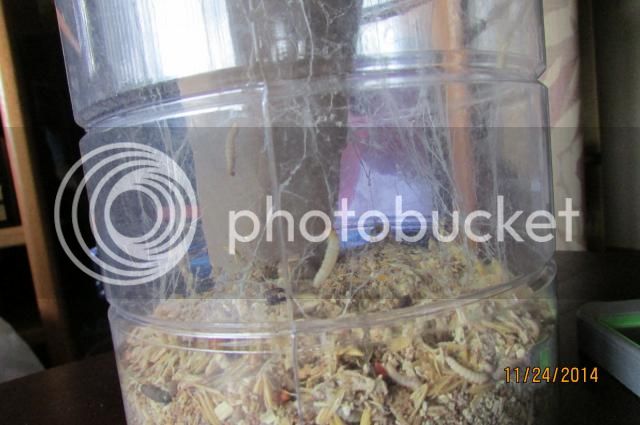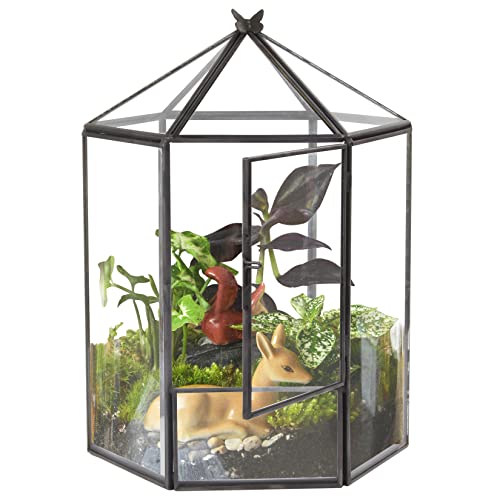I originally found some instructions on setting up a waxworm culture, here is the one I used for the basic food mix. I did however add beeswax to my mix and used cardboard with the paper peeled off one side as recommended elsewhere (can't remember where) for a area for them to cocoon in.
Here is my experience with the culture, and I'm on my 3rd generation all using the same food layer. I wanted to know if my results are typical, anything I can do to improve their life cycle speed (to always have moths), tips, and what to avoid? Also what is a better way to remove the adult moths as my newer container is much too large for tweezers (maybe some sort of sleeve)?
2nd Generation


3rd Generation


Here is my experience with the culture, and I'm on my 3rd generation all using the same food layer. I wanted to know if my results are typical, anything I can do to improve their life cycle speed (to always have moths), tips, and what to avoid? Also what is a better way to remove the adult moths as my newer container is much too large for tweezers (maybe some sort of sleeve)?
Here are some photos of my culture from the 2nd generation, and the others are close-ups of the huge amount of larvae that are now in the culture 3rd generation (which the 2nd generation moths are still alive).Anyway I bought fifty waxworms (MantisPlace) to start my culture. The waxworms stayed on top of the food layer (about a 3" layer filling the container). They transformed to moths after making cocoons, and mated and all died rather quickly it seemed (as I never did use any as feeders to ensure they laid eggs). Soon after I started to notice a few tiny larva about the size of fruit fly larva.
After that they disappeared into the substrate I discovered (but never saw them), as I thought the culture died off, but I let it sit and then more cocoons appeared. The second round of moths were close to 150 or more starting about a month ago, a big increase from the first moth batch of maybe 20. I left them alone for awhile until I noticed mating and them laying eggs.
I started using them as feeders, and all my mantids enjoy them. The moth number finally dwindled down to about 20 moths from the large mass of moths that were everywhere. I kept using the moths as feeders but realized that I always seemed to have 15-20 even after using about a dozen or so as feeders - as others kept emerging from their cocoons at a different rate.
Today I noticed there were tiny larva on the sides of the container, and there were still moths. It seems that the culture is starting to get various waxworms at all stages. Upon further inspection the entire food layer/substrate is absolutely filled with larva, and many on the top too - the larva are all sizes/instars. So many waxworms visible on all sides and near the bottom of the food layer that I am now worried they will eat it all in their 3rd generation.
I have a much larger container that I will convert to house my waxworms soon. I was going to split them up and chill some to get different instar stages so I could always have moths, but seems it isn't needed. So far all I did was setup the culture and use 10" long tweezers to grab the moths through a sponge covered hole as feeders.
The sponge covering the hole is a favorite for egg laying and I have to cut off the section that was inside the culture, as it turns into a hard mass when I want to get feeders.
2nd Generation


3rd Generation


Last edited by a moderator:


















































